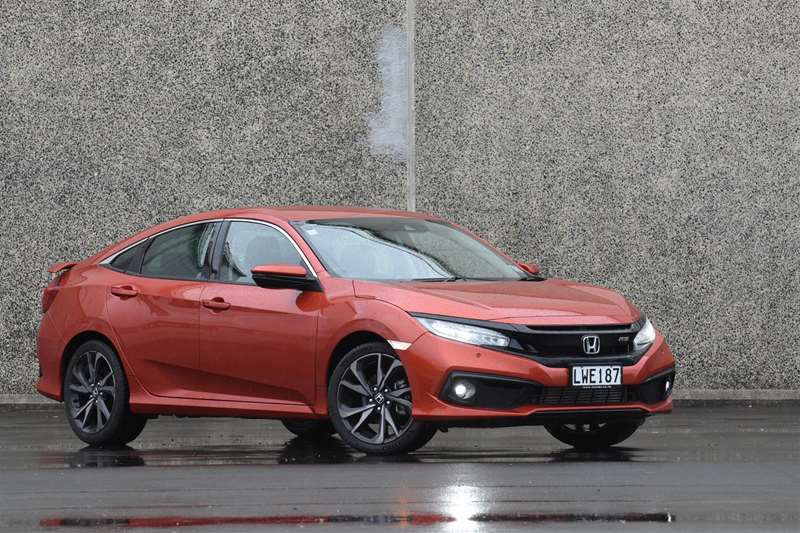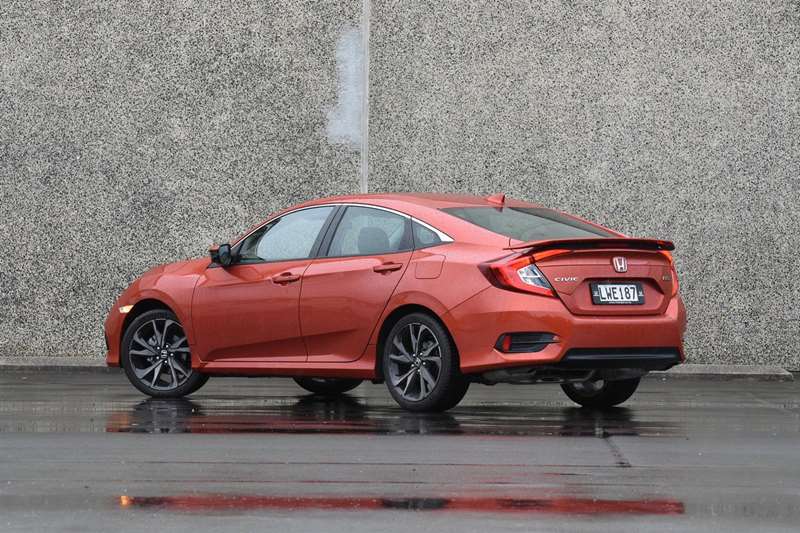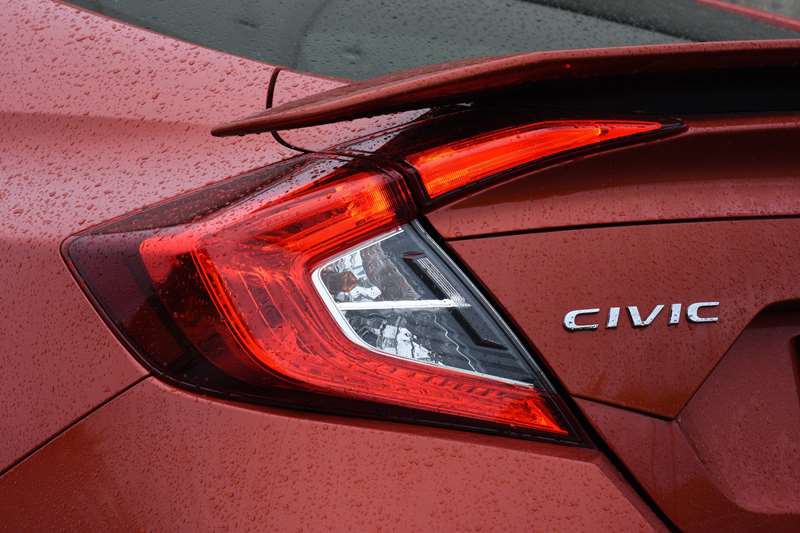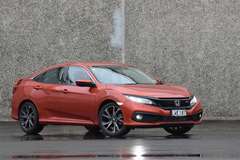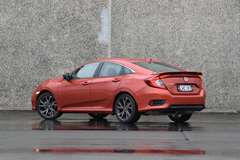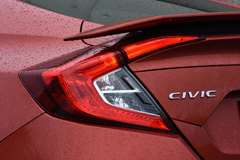David Thomson puts the 10th-generation of the Honda Civic through its paces.
What’s new?
A mid-life upgrade to Honda’s 10th-generation Civic includes a raft of active safety enhancements, as well as exterior and interior styling and detail changes.
Going under the moniker Honda Sensing Technologies, the extended safety package is offered as standard on two Civic models: the $39,990 RS Sensing sedan (as tested) and the $41,990 Sport Sensing hatch.
The safety package is a comprehensive one, albeit on par with the equivalent systems that are increasingly common on mid-sized, mid-range cars. It centres on an active cruise control system with low-speed follow capability. This enables the system to be operated both on the open road and around town, even in stop-start traffic. In such situations, once the vehicle ahead starts moving again, a gentle tap on the accelerator reactivates the system.
Forward collision warning and emergency collision mitigation braking are also part of the sensing package, as well as lane-keeping assistance, lane-departure warning, road-departure mitigation systems, and adaptive auto-dipping LED headlights.
Along with extra safety kit, the two Sensing models continue to be distinguished from the SX Civic through using a 174kW/220Nm 1.5-litre turbo engine rather than a 104kW/174Nm 1.8 litre non-turbo motor.
What comes as standard?
Compared with the SX, the RS Sensing sedan picks up mixed leather trim, heated front seats (the driver’s is power-operated), dual zone climate control, exterior LED head and running lights and auto-folding exterior mirrors. There’s also keyless entry and an upgraded sound system. The one obvious omission on the RS sedan is satellite navigation, which is only provisioned as standard (along with a sunroof) on the Sports Sensing hatch.
Along with front and rear reversing sensors and a three-angle reversing camera, the Honda LaneWatch system is retained. This displays a left-hand side view of the car on the centre display screen when the left indicator is on, to reduce blind spots if turning left or changing lanes.
What’s it like to look at?
The current Civic sedan was notably rakish when it first appeared, with its strongly angular nose and prominent rear light clusters especially bold at the time. It remains sportingly attractive close to four years on. Fitted with a neat boot spoiler, twin exhausts and running on dark alloys shod with 235/40 ZR18 Michelin tyres, the test car gained a further lift with its Phoenix Orange paint scheme.
What’s it like inside?
The cabin combines a low-slung sports-style driving position with ample room and an abundance of practical features.
By way of example, the bin beneath the front centre arm rest is massive by class standards, and there are further handy storage spaces forward of the gearshift, and in a separate compartment under the base of the centre console. The latter bin includes power and connectivity points that are a little fiddly to access.
A minor but positive change to the centre display screen is the replacement of the previous touch-sensitive volume control slider with a conventional knob.
Bluetooth connectivity was fuss-free on test, and there is Apple CarPlay and Android Auto connectivity, too.
Red contrast stitching gives the cabin a subtle sporting lift. A new textured bar running across the dash from the centre console to the passenger’s door is presumably intended to do the same with a mock carbon-finish but, to my mind, it looks too plasticky to be truly convincing.
The rear of the cabin is quite spacious, with a fold-down centre arm rest when required, and an unusually well-padded centre seating position when three occupants are accommodated. There’s also 60:40 split folding access to the boot, which has an excellent 525-litre capacity in its standard configuration.
What’s it like to drive?
Those who seek a no-compromises sporting experience from a Civic have the widely-acclaimed 2.0 litre Type-R to consider. Thanks to that very special model, the RS has a much more measured role to play within the Civic line.
In addition to a more potent engine than the standard SX, the RS picks up paddle-shift controls for the seven-stage CVT transmission, as well as an upgraded sports suspension.
Unchanged with this latest upgrade, the engine delivers unobtrusive performance and becomes more responsive higher in the rev range. The CVT matches well to the engine, with the paddle shift controls offering a reasonable degree of transmission control when desired.
The Civic competes in a class that is brimming with cars that combine decent ride quality with super-sharp handling. The RS set-up tends to the firmer end of the spectrum, though not uncomfortably so, with the payback being very well-contained body roll, allied to fine handling balance. With steering which, while light, is very accurate, and ample grip from the Michelin Pilot tyres, the test car was fun to drive through the twists and turns and remained comfortable on the main highway haul.
The active radar cruise control and lane-keeping assistance made for relaxing driving, but my real interest was in the system’s slower-speed capability in the stop-start conditions that are becoming an unfortunate part of motoring in Dunedin.
While the ability to re-start the system with a simple tap on the accelerator is handy, the safety system is not entirely foolproof. For example, it doesn’t always look on to (or maybe disconnects from) the car ahead when that vehicle is stopped. On another occasion the collision mitigation aspect of the system appeared to mistake a parked car on the outside of a corner for a vehicle it was tracking, and braked quite aggressively on the assumption that contact was imminent.
Those qualifications aside, the system certainly took some of the agony out of working through the congestion of the city’s one-way system and, to a lesser extent, was effective working through the traffic lights along George St.
Verdict
The active safety upgrade which is part of the current Civic’s refresh is important given the features that now appear on so many of its rivals. However, the core appeal of the RS sedan remains its blend of good looks, roomy and well-appointed interior, and all-round dynamic ability.
Photos: David Thomson
